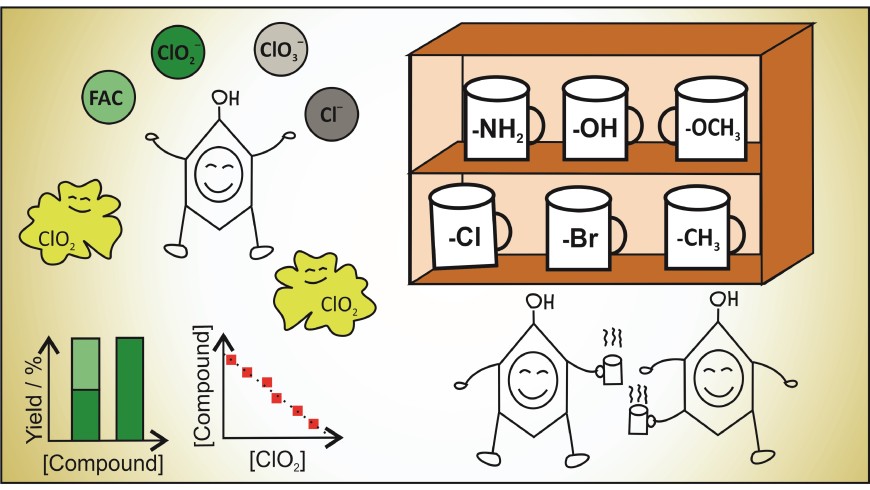New Publication in ES&T
Reaction Mechanisms of Chlorine Dioxide with Phenolic Compounds-Influence of Different Substituents on Stoichiometric Ratios and Intrinsic Formation of Free Available Chlorine
2023/09/07
Mischa Jütte, Janis A. Wilbert, Marcel Reusing, Mohammad Sajjad Abdighahroudi, Christoph Schüth, and Holger V. Lutze

Chlorine dioxide (ClO2) is an oxidant applied in water treatment processes that is very effective for disinfection and abatement of inorganic and organic pollutants. Thereby phenol is the most important reaction partner of ClO2 in reactions of natural organic matter (NOM) and in pollutant degradation. It was previously reported that with specific reaction partners (e.g., phenol), free available chlorine (FAC) could form as another byproduct next to chlorite (ClO2–). This study investigates the impact of different functional groups attached to the aromatic ring of phenol on the formation of inorganic byproducts (i.e., FAC, ClO2–, chloride, and chlorate) and the overall reaction mechanism. The majority of the investigated compounds reacted with a 2:1 stoichiometry and formed 50% ClO2– and 50% FAC, regardless of the position and kind of the groups attached to the aromatic ring. The only functional groups strongly influencing the FAC formation in the ClO2 reaction with phenols were hydroxyl- and amino-substituents in ortho- and para-positions, causing 100% ClO2– and 0% FAC formation. Additionally, this class of compounds showed a pH-dependent stoichiometric ratio due to pH-dependent autoxidation. Overall, FAC is an important secondary oxidant in ClO2 based treatment processes. Synergetic effects in pollutant control and disinfection might be observable; however, the formation of halogenated byproducts needs to be considered as well.
